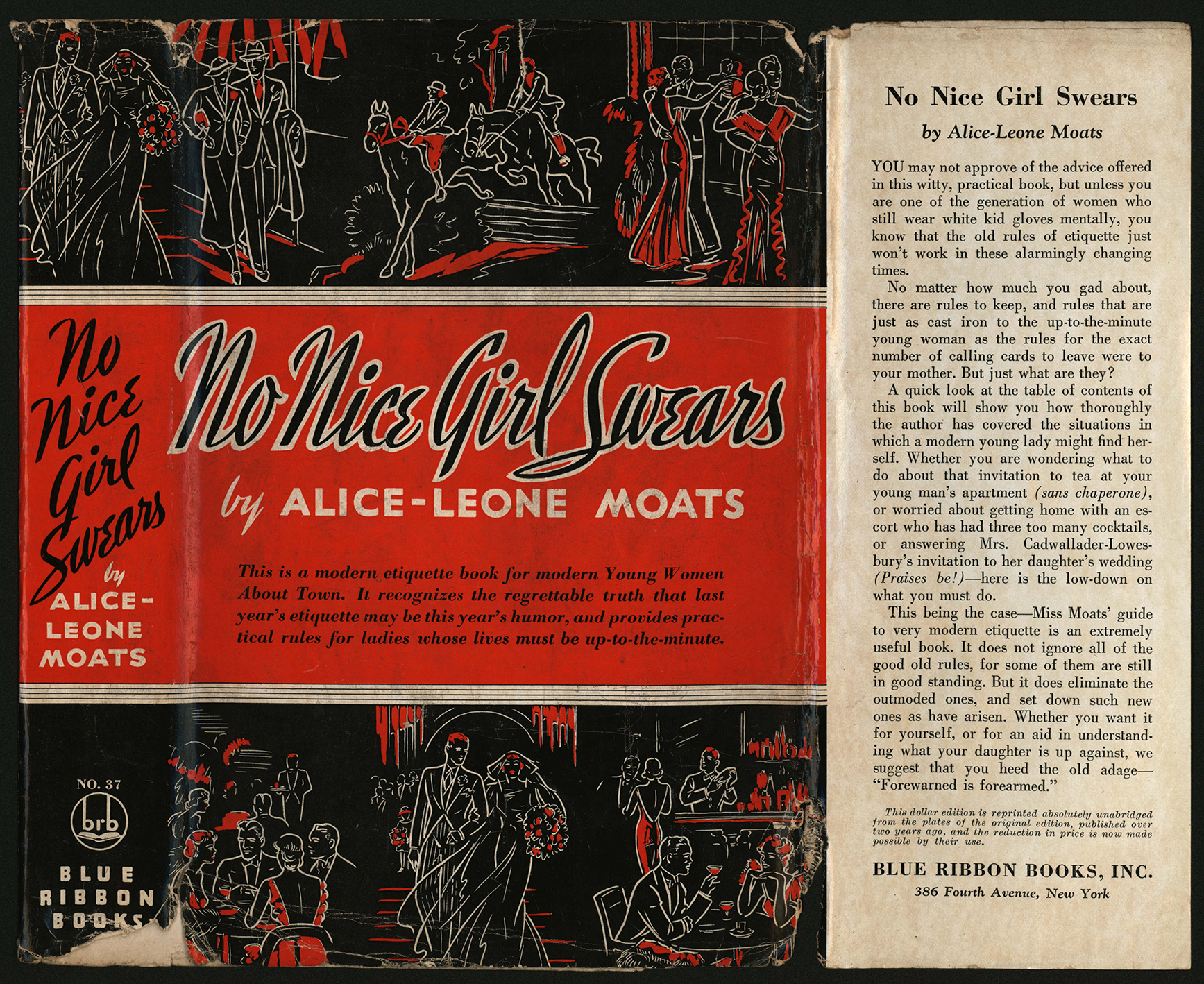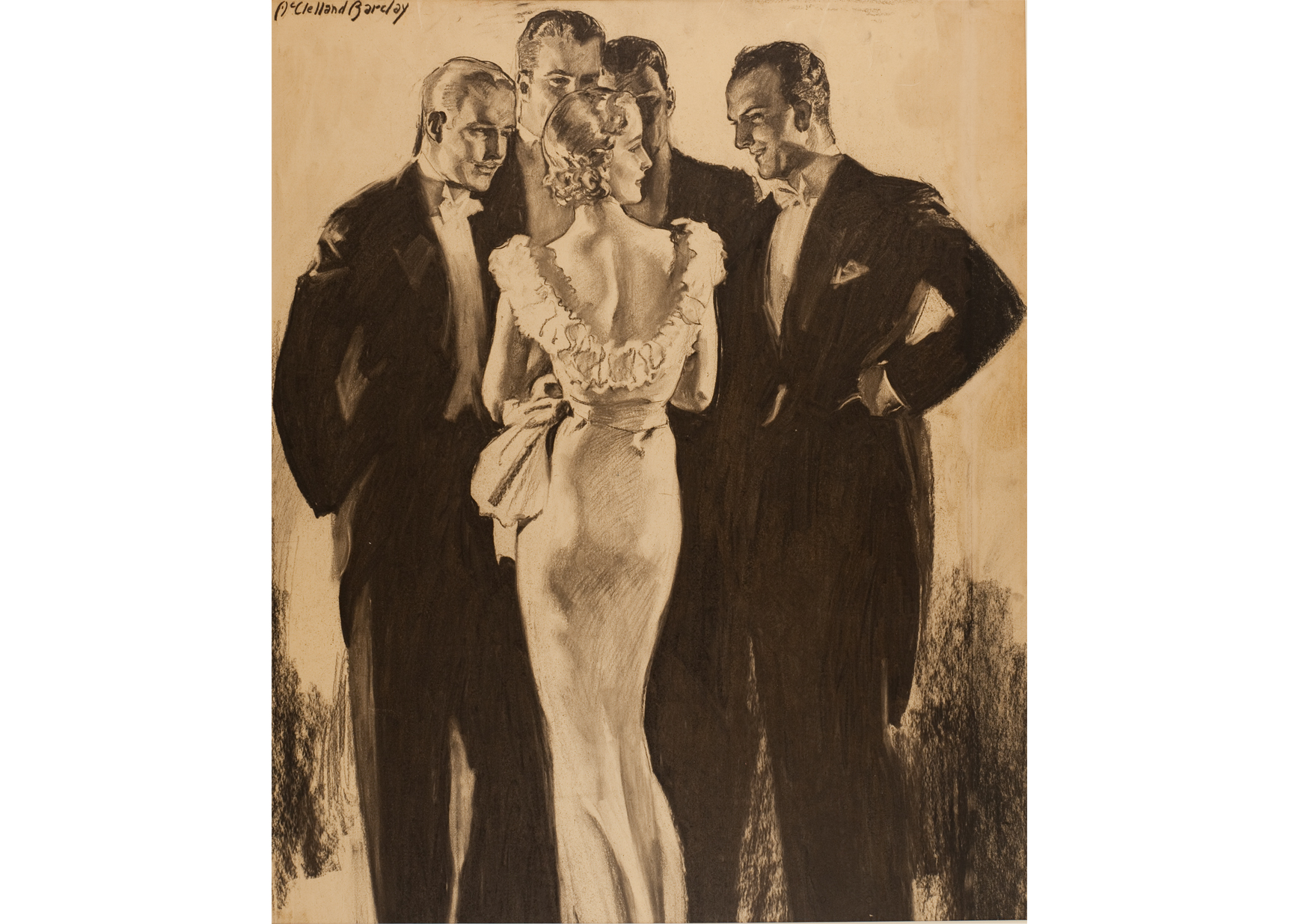I love research. Whether it’s a specific mystery to be solved, a deep dive into an unfamiliar artist, or a rabbit hole of unexpected connections, research is my favorite part of every project. Our upcoming exhibition Jazz Age Illustration was no exception. The Museum has about 800 illustrations from the 1920s and ’30s in our collection. Deciding which ones to include in the show and what to write about them provided endless opportunities for discovery.
When I started this project, there were dozens of unidentified illustrations that needed research to establish when and where they were published. I needed to figure out their dates and if and where they were published to determine if they even fit into the parameters of a show about the Jazz Age. During my research, I identified dozens of drawings, allowing me to better understand the context in which they appeared.
One gorgeous mystery was a large charcoal drawing by McClelland Barclay, a popular magazine illustrator and a talented designer of jewelry and housewares. This charcoal is stunning and in great condition. Plus, it’s the only work by Barclay in DelArt’s collection, and he was a big deal in the Jazz Age, so I was determined to figure out the story behind it. With its depiction of men in tuxedos and a woman in a glamorous bias-cut dress, it seemed like a perfect fit. I searched every magazine database I could think of with no luck. Barclay illustrated plenty of stories in the 1920s and ’30s, but this image was nowhere to be found.
An inscription on the work provided the clue I needed: among the scrawling, it read “King Features” and “Release March 18, ’34.” From my research on cartoons by Faith Burrows, I knew that King Features syndicated newspaper material including comics and features. Barclay was bit of a celebrity in the 1930s, so newspapers.com gave me hundreds of hits on his (thankfully unusual) name. Luckily, the date helped me narrow things down, and I discovered his series “Girls I Adore,” published in The Philadelphia Inquirer (and other newspapers) in February and March of 1934.
“Girls I Adore” appeared across a full page on the front of the Sunday supplement with captions written by Alice-Leone Moats, who had recently gained fame as the author of No Nice Girl Swears, “a sassy book of etiquette that immediately became a best-seller.”ii In a few amusing paragraphs, Moats described each type of woman pictured—the “worldly man-wise” woman, the “chaise-longue intellectual,” the “helpless little girl”—balancing romantic advice with swipes at the pretensions of the subject and her admirers. In ours, Barclay depicted a woman in an evening dress enveloped by a crowd of men (pl. 29). Moats explained the type: “Every now and then a girl has the ability to give the impression that she is always surrounded by admirers and can arrange things with so much cunning that the main man in her life doesn’t suspect what position he occupies.”ii
I shared my interest in Moats with DelArt’s librarian, Rachael DiEleuterio, who managed to find a copy of No Nice Girl Swears with its stylish book jacket. (Illustrated dust jackets were an innovation of the Jazz Age too, but that’s another story.) No Nice Girl Swears is modern etiquette guide, helping young women navigate quandaries not faced by their mothers. She opens with gusto: “Let’s face it. Time and manners have changed so much and with such rapidity that the older generation can’t even pause to be horrified and talk about the ‘old days.’ They’re too breathless trying to keep up. This is essentially the day of youth.” It’s hard to imagine a more quintessentially Jazz Age intro than this! No Nice Girl Swears is an entertaining read and easily available online in vintage copies, recent reprints, and even as an ebook.

The research for Jazz Age Illustration was both deep and broad and it took me in directions I didn’t expect. The exhibition research encompassed hundreds of works—including many that didn’t make the final checklist—and unfolded over the course of five years. (And that’s not counting the many years of research on the illustration collection by my colleagues Mary Holahan and Joyce Schiller and their predecessors.) One of the great benefits of a collection-driven exhibition is learning more about the works in the Museum. This information influences future exhibitions, publications, and gallery displays.
If you are excited about my research journey, I encourage you to consider sponsoring a work of art in the exhibition. Your donation helps to make curatorial research possible. Interested? Contact Josh Liss at jliss@delart.org for a list of available works.
Heather Campbell Coyle
Curator of American Art
i “Alice-Leone Moats, 81, Journalist, Is Dead,” The New York Times, May 16, 1989, B6.
ii Alice-Leone Moats, “McLelland Barclay’s Girls I Adore,” Philadelphia Inquirer, March 18, 1934, 93.
Top: Girls I Adore, 1934, Illustration for “Girls I Adore” by McClelland Barclay with text by Alice-Leone Moats, syndicated nationally by King Features. Appeared in Philadelphia Inquirer, March 18, 1934. McClelland Barclay (1891–1943). Charcoal on illustration board, composition: 31 9/16 × 25 7/8 inches, sheet: 33 1/8 × 28 inches. Delaware Art Museum, F. V. du Pont Acquisition Fund, 1992. © Artist or Publisher.


